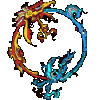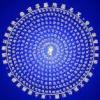Search the Community
Showing results for tags 'Dzogchen'.
Found 39 results
-
This is a collection of posts, from Loppon Malcolm, explaining the epistemological advantage of Dzogchen, when revealing the false mind-matter dichotomy. Though this comparison is made between the lower yanas of Buddhism: it can be concluded, without doubt, that this mind-body dichotomy is a prominent feature among Eastern and Western philosophical traditions: Now we are entering the realm of Ati yoga, where we discover that actually the fundamental state of our being is our physical body - our existence as body ~ Dzogchen Ponlop Rinpoche http://www.dharmawheel.net/viewtopic.php?f=39&t=14040&start=200 ...only in Dzogchen teachings is the substance dualism that is a prime feature of Buddhist thought from abhidharma right up the the lower tantras truly overcome in an explicit fashion. http://www.dharmawheel.net/viewtopic.php?f=39&t=14040&start=220 The manner in which the other schools resolved this is through recourse to a species of mentalism i.e. the subtle inner madhyamaka, if you will... No, seriously -- for example, Khyentse Wangchuk declares that there is no difference between mind and matter because everything is established as mind. This is perfectly acceptable thing to say in a Lamdre context. I have seen the same statement [everything is established as mind] coming from Gelugpas when they explain how one is to practice Vajrayāna, as opposed to how the Gelug sutra view is formed and asserted. This is also how the Kagyus phrase things. This is not how Dzogchen deals with the issue at all. Please bear in mind that not everything said by Nyingmapas necessarily reflects the view of Dzogchen. http://www.dharmawheel.net/viewtopic.php?f=48&t=8380&start=0 If you elevate everything to the ultimate level, even "...matter is unconditioned without anything missing", as it says in the Yum Chenmo, the sutra of Perfect Wisdom in 100,000 lines. But the Buddhist scholastics from Sarvastivada up to Dharmakirti have always maintained a hard division between mind and matter, between nāma on the one hand and rūpa on the other. For example, in the account of the twelve links in the Vibhanga, the Pali Abhidharma compendium, when discussing the twelve nidanas, it even leaves off the rūpa in the nidana of nāmarūpa, running ignorance, formations, consciousness, name, etc. The Yogacara school attempts to supercede this dualism through asserting that everything is fundamentally a projection of the mind -- in fact the 15th century Lamdre Master Khyentse Wangchuk states, there is no dualism of mind and matter because everything is mind. As we know, Madhyamaka adopts the conventional truth either according to the Sautrantika system, or the Yogacara system. But since it's own perspective is grounded in the Prajñāpāramitasūtras, it regards distinctions such as mind and matter to be merely conventional designations that do not have any real basis apart from imputation. But we can see that this division is well preserved in Buddhist tantric literature (as well as Hindu tantric literature) when we find for example that the mind is described as a rider of a horse, vāyu. This is because both forms of tantra, Buddhist as well as Hindu, are concerned with the mechanics of the body for understanding how to gain realization through our embodiment through the practice of various kinds of yoga. Granted, this is sometimes is found in Dzogchen literature as well. But when we examine that actual system of Dzogchen according to the ancient Dzogchen tantras, we find that in fact even consciousness itself is generated phsyiologically in the body by a vāyu. I have yet to find in an original Dzogchen tantra the common Buddhist term khams drug, sadadhātu i.e. earth, water, fire, air, space and consciousness. I may yet find it, but at least the Valby KWIC tool does not in fact list it in the 83 or so important Dzogchen tantras that he converted into searchable text files. It also does not list every instance of thod rgal in the Dzogchen tantras as well so its look up routines are not completely infallible. But there are hundreds of references to the five elements ('byung lnga, pañcabhutani). I have been also examining the Mdzod phug lately, Bon "Abhidharma" and cosmology, is largely freed from the constraints of Buddhist conservatism, has very interesting things to say about the five elements and so on, and when is a text clearly influenced by Dzogchen. A kind of Dzogchen Abhidharma. One of the reasons why I started looking into this text is that the Rigpa Rangshar tantra contains a very brief mention of a primordial egg cosmology which accounts for the formation of the world, similar to the Vedas and Bon: Now, to demonstrate the ignorance of the object of delusion: delusion is deluded by the forgoing. The field is prior to the formation of the world; a so called “wish-fulfilling tree” grows, a tree growing from the blessing of the youthful vase body of the buddha, born from warmth and moisture which arose from an egg. The Sahāloka formed from the mind disturbing the so-called self-originated wisdom in that. That is called the ignorance of the field of delusion. http://www.dharmawheel.net/viewtopic.php?f=48&t=7522&hilit=delusion&start=60 A tantra called Uprooting Delusion from the dgongs pa zang thal cycle provides the following description: The way sentient beings arise: that nameless general ground, is non-conceptual and not established at all, invisible and unclear, from which when the bifurcation occurs, since vāyu, vidyā, and space separate, [3/b] the intrinsic sound of the elements produces vibration. From the inside of the darkness of the clear part of appearances, as soon as a storm of fire emerges, scattering everywhere, Vidyā, like the mind of a lunatic, is dazed and reeling. Since vidyā lacks confidence in its own appearances, it panics at sound, is frightened of rays, and through awareness not taking its own place, the ignorance that arises simultaneously with it is called “the causal ignorance. Because of a lack of mindful attention, self and other are grasped as a duality, and both outer and inner dependent origination occur. The whole universe arises through awareness looking externally. All sentient being arise through awareness looking internally. Through looking there, fearful appearances arise, through looking here, ‘self’ arises. Many mistakes arise from the single mistake about the appearances of here and there. Because of being mistaken about a self, there is a mistake about other, attachment to self, aversion to other. From the seed of attachment and aversion, the whole outer universe and inhabitants are mistakes. Because one is held as two, [4/a] that is called the delusion of dualistic grasping. Since one imputed and mistook outer and inner, that is called “the imputing ignorance”. Because of familiarity of subject and object of that, from the thick buildup of traces, there was entrance into the state of samsara. That is how the six migrations occurred.” http://www.dharmawheel.net/viewtopic.php?f=48&t=7522&hilit=delusion&start=80 ...the String of Pearls states: Having been gripped by the apprehender and apprehended in the aggregates, elements and gateways, one remains in samsara itself for a long while, within the belly of the three realms one is placed in the prison of name and matter, [352] bound by the chains of ignorance, covered with dense black darkness of samsara, attached to the spicy taste of passion, one is bound by the noose of confusion, tormented by the hot fire of hatred, one’s head is covered by pride, the gates of jealously are locked, surrounded by the armies of resentment and so on, tied about the neck with the noose of apprehender and apprehended, stuck in the swamp of past traces, one’s hands are shackled with ripened karma, the mother of karma is joined with her child, one following the other just like a water wheel, alternating between good and bad bodies, born in different forms, and through heightening one’s self-grasping one sinks to the bottom of the ocean of suffering, one’s heart is grabbed by the goad of the evil destinies, one binds oneself with the enemy, afflictions. Fire appears as water to hell beings, as hunger and thirst to hungry ghosts, as fog to animals. the aggregates, gateways and elements appears as the five elements to humans, those are also pleasurable, painful and neutral, as weapons and armor to asuras, and as desirable things to gods. For example, just like a rapidly spinning fire wheel one abides continuously in samsara for a long while. Such various appearances are like seeing a snake in a rope since what isn’t there is held to be there, both the outer and inner container and contents form, and if that is investigated, it is a rope, i.e. the container and contents are already empty the ultimate with the form of the relative." The mistake then is seeing as there what isn't there, which is why this tantra, among others uses the rope/snake example. What this tantra is stating is that deluded appearances we see that are predicated in the basis do not exist in the basis and are not appearances of the basis, but rather misapprehensions of the appearance of the basis. http://www.dharmawheel.net/viewtopic.php?f=48&t=7522&p=89967&hilit=delusion#p89967 Sentient beings are deluded about the display of the basis. When they cease to be so deluded, they are buddhas. The basis never displays as anything other than the five lights. Further, The Luminous Space states: That mind is produced out of the dualistic grasping to the six objects of the manifestation of wisdom. How can that [mind] be produced? Since [the mind] is produced from that ignorance that does not recognize the intrinsic manifestation of wisdom [the mind] is produced. Sentient beings, rocks and trees are assembled by delusion about the basis. But the basis only displays one way. It does not display as both samsara and nirvana. Since that critical point of luminous empty vidyā was not recognized, grasping onto that produced the five elements, and the causal thigle [was produced] from the refined part of those. The body was produced from that [refined part] and energy [rtsal] of wisdom produces the five sense gates in that [body]. Within those [sense gates] the five wisdoms are produced. The five [sense gates] grasping onto those [five wisdoms produce] the five afflictions. After first being created by the energy of wisdom; in the middle, it was not recognized that the body of the refined part of the assembled elements actually is the five wisdoms, since this was not realized, through intellectual views, the non-sentient and sentient both appear, but don’t believe it. Here, it is actually five wisdoms to begin with; in the middle, when the body is formed from assembly of the elements through ignorance grasping onto those [five wisdoms] also, it is actually the five wisdoms. The five aggregates, sense organs, and afflictions also are actually the five wisdoms. In the end, since one transcends accepting, rejecting, proofs, and negations since those are realized to not be real. As such, the sign of non-duality is [the body] disappearing into wisdom without any effluents because the critical point of the non-duality or sameness of the non-sentient and the sentient was understood according to the Guru’s intimate instruction. The basis only is the five wisdoms and only displays as the five wisdoms -- the rest is delusion. Ignorance [avidyā] is not a display of the basis, it is delusion about the display of the basis. Knowledge is not a display of the basis, it is the absence of delusion about the display of the basis. One basis, two paths, two results. http://vajracakra.com/viewtopic.php?f=59&t=1203&start=140 According to the sNying thig tradition, at the time of the result the division between animate and inanimate vanishes. The distinction vanishes. The basic view of man ngag sde is that the light, the visible expression of wisdom, is reified into the five elements. When that reification is dissolved, also the perception of a difference between the animate and inanimate dissolves, since the five elements pervade all phenomena including mind/consciousness. Actually, the view of man ngag sde is that even consciousness itself is a product of the five elements. But this is not a problem since the actual nature of the five elements is the five wisdoms. Yes, this is how Dzogchen can give a physicalist account of consciousness while avoiding the charge of being physicalists, i.e., because the appearance of the sentient and the non-sentient arises out of the a misperception of the five lights of the basis. http://www.dharmawheel.net/viewtopic.php?f=48&t=8536&start=40 ...Since the brain is made of five elements, it too is made of the five wisdoms (ye shes) of vidyā. Therefore, there is no problem with awareness, etc., having a basis in the body. Actually, what we say in Dzogchen is that the wisdom of vidyā is located in the heart, the energy of vidyā is located in the brain, where it governs sense organs and cognitions. Wisdom has no origin, it formed naturally. Hence the metaphor of the peacock feather. The elements form from the non-recognition of of the five lights of connected with the five wisdoms. The Khandro Nyinthig states: Since that mind arose as automatic manifestation of six mental apprehenders, the five elements are produced. Since those are not recognized as the five wisdoms, the five elements assemble in dependence upon grasping those [five wisdoms]. Since those assemble, the body forms through the action of one [element] assisting the other. With that forms the apprehended and the apprehender. And: As such, that basis, the natural reality of things, the great intrinsic energy of wisdom, the dharmakāya, was not recognized, and because of the stains of grasping to it, the elements assemble; the body forms from them, and based on that [body], one wanders in samsara until one ages and dies. And: Since the five energies of wisdom are unceasing, the body forms from the five elements. Since two kāyas are integrated with the relative elements, that previous understanding of the intrinsic energy of wisdom is totally forgotten. The ultimate four elements is the dharmakāya, the relative four elements is the sambogakāya. Nirmanakāya is the lack of sameness and difference of the two kāyas. And: To sum it all up, ignorant attachment to dualistic appearances assembles the energy of wisdom into the elements, and forms the body in actuality. And: Energy is produced unceasingly from that wisdom. Since that energy was not recognized, that apparent and natureless radiant luminosity of wisdom arose as the empty luminosity of the five lights. [430] Within that, since this thinker of thoughts grasps the unceasing energy of wisdom, and since that five colored energy is assembled as the elements, therefore, the body, flesh, blood, warmth, breath, channels and so on are formed from that energy of wisdom. For as long as the mind and the body do not separate, the channels, vāyus, bindus, wisdoms and so on are inseparable. Since that is not recognized as such and the one is grasped as many, like the nameless becoming named, since the five wisdoms, the five afflictions, and so on are divisions in one thing, also those wishing for Buddhahood have aggregates, without contacting the meaning of this even slightly. With this everything is recognized as coming from the energy of wisdom. Since inseparability is recognized, therefore the defiled also comes from the energy of wisdom. Also that self-liberated from the mind, and as the defiled does not appear, Buddhahood is attained in the expanse of wisdom. Therefore, it is inseparable. Others hold them as different, and respond with practice. And: ... after the body formed because the energy of initial vidyā was not recognized as wisdom, there is delusion because of the grasping of materiality, and wandering in samsara. And: The relative material bindu is the intrinsic radiance of those five wisdoms of the originally pure dharmadhātu externally manifesting as five lights, after which, the elements are produced upon the mere traces of grasping of the mind. Further, the natural reality of that mind (that established in anyway) is space. Whether that is like this or not, the energy of that vivid luminosity arising as the diversity, that is called “vāyu”, it is called “mind”. Though luminosity is called mind, because of movement, it is called “vāyu”. When examined, it is not established in anyway. Also luminosity is not established, also movement is not established, also inseparability is not established. Since that is not recognized, since that energy that grasps so called “vāyu” produces heat, there is fire. For example, just as when sweat and heat is produced when a person does hard work, [fire] is produced from that grasping onto heat. When the heat of fire touches the ground, water is produced in the form of vapor. Since grasping onto that energy of wisdom arose, the outer five elements are produced, caused one by one. The five elements form matter. Since grasping onto that arose, the five elements assemble, and the body forms through the condition of the five refined parts of those [elements], one by one. If it is asked why, now then to begin with, the energy of wisdom is vāyu, from that is heat; from that, earth; from that, water: since each assists another, the body develops more i.e. the body actually forms out of the refined part of the five elements. That [body] is pervaded by the refined part of the five elements. The refined parts and that energy of wisdom are given the name “channels, vāyus, and bindu”. The energy of wisdom is the five elements. Since wisdom is present in them, there are five wisdoms. That is given the name material bindu. Wisdom is inseparably present within that material bindu. And: Further, to begin with, the body is formed by ignorance of the wisdom of basis. The nature of wisdom in that body is the refined part of the five elements, present in the material bindu as the play of the kāyas and wisdoms. Since their luminous radiance arose as light, it is given the name “three wisdoms”. And: Though the body is formed form ignorance of the basis, as soon as that is recognized, it is not beyond wisdom in the beginning, the end and in the middle. Etc. this text just goes on and on in the same vein. http://www.dharmawheel.net/viewtopic.php?f=39&t=14040&start=240 While there are of course Dzogchen texts that describe mind and body as separate, in general, the innermost secret cycle holds that the perception that there is a difference between the animate and inanimate is a mistaken one. In the state of ultimate liberation [i.e. samyaksambuddhahood], the distinction between animate and inanimate disappears because it is not true. Further, like other Vajrayāna traditions, Dzogchen provides a physical account for the process of rebirth for example in the Vajramala Tantra: it is proposed that the alayavijñāna, which is inseparable with the mahāprāṇavāyu, is responsible for transmigration; for the appropriation of a new series of aggregates. But Dzogchen goes a step further and explicitly identifies consciousness as the operation of a vāyu in the body. Vāyus of course are the function of the refined element of air inside the human body. http://www.dharmawheel.net/viewtopic.php?f=39&t=14040&start=280 - The point is that in Dzogchen teachings mind and matter are not treated as different substances as they are in other Buddhist systems. They are equally treated as producers of the five elements. The way in which Dzogchen avoids the charge of being "physicalist" is that the five elements themselves arise from misperception of the nature of the basis [more or less emptiness endowed with light], without needing the intermediate step of proposing everything is an appearance of mind and so on. And of course the awareness that misperceives the basis arises out of a vāyu that stirs in the basis, and so on. It gets a little complex.... ...basically the point being underscored is that matter and intelligence are non-dual. For example, it is a special tenet of Dzogchen that even the formless realms are material, i.e., that basically, wherever there is matter, there is consciousness, wherever there is consciousness, there is matter. You can either say that matter is intrinsically conscious or that consciousness is intrinsically embodied. Either way it amounts to the same thing. "Sentient" and "non-sentient" are merely conventional designations based on appearances generated by ignorance.... No, not photons, not physical light in the western scientific sense of the term. Precisely, the basis is ye shes. Empty luminous energetic ye shes which appears to a neutral awareness (which itself rises out of the basis when a vāyu in the basis stirs). http://www.dharmawheel.net/viewtopic.php?f=48&t=6842&start=0 The basis is called the basis because it has not been realized. At present the basis is not latent, like it is between eons. At present the basis is in a state of manifestation as Buddhas and sentient beings. When the basis is latent, we term it "the time of the basis" or "the bardo of samsara and nirvana". After the basis manifests we term this phase "samsara and nirvana turn their backs to one another". When we fully realize the path of dzogchen, it is called "the universe manifests as the basis": in other words, our total experience will be the three wisdoms subsumed under the name, great original purity. The basis itself has not changed in anyway during these three time periods. When the latent awareness (shes pa bag la nyal] of the basis recognizes the basis as its own display, it becomes prajñā [shes rab] and realizes buddhahood as Samantabhadra. When the latent awareness of the basis does not recognize itself, under the power of the imputing ignorance that imputs appearances as other and that awarness as a self, it becomes consciousness [rnam par shes pa]. The 'latent awareness of the basis' is an aggregate name for all those beings who have not acheived total buddhahood in the previous eon, but acheived a so called "buddhahood that reverts to the cause", [as I have explained now several times within the last few weeks] in the same way that we refer to the aggregated consciousnesses of all sentient beings as the vijñānadhātu, along with dhātus of earth, water, air, fire and space, the so called sadadhātu, the six dhātus. It is part of the rtsal of the basis.... The basis is not one thing, it is not many. It is the dharmadhātu... ...This is basically how it is -- but since there is no individuating consciousnesses driven by affliction, the awareness latent in the basis is not discussed in plural terms, that is until there are individuating consciousnesses when samasara and nirvana "turn their back to each other". Oh, this comes about because of traces of action and ignorance. Nothing in the basis changes, of course, what happens is that there is sort of cosmic pulsation of ignorance and its subsidance which results in the appearance and disappearance of samsara and nirvana; and as we know, traces can accumulate in wisdom. You have to understand that all of this explanation of cosmic cycles is really intended to be brought down to the level of the individual's life cycle in terms of the four bardos: The bardo of death == destruction of the universe up to the two higher form realms The bardo of dharmatā == the arising of the sound, light and rays of the basis The bardo of becoming == non-recognition of the basis The natural bardo of this life == the appearance of samsara and nirvana It is an explanation for practice. http://www.dharmawheel.net/viewtopic.php?f=39&t=14040&start=300 - Correct, the aspect of the basis called compassion is the energy of the display of the universe and all its beings.... Real "pure" view means seeing universe and beings arising as the basis. The "pure" view in Vajrayāna is merely a conceptual construction which itself needs to be remedied with the completion stage. Dzogchen skips the two stages.... There are two bases, the original general basis and the basis of the person. http://www.dharmawheel.net/viewtopic.php?f=39&t=14040&start=320 A mind or an awareness [shes pa] has a "choice" recognition or non-recognition. The recognizing mind is called vidyā or prajñā. The non-recognizing mind is called avidyā. There are two kinds of Buddhahood in Dzogchen, abhisambodhi, which has a non-abiding nirvana; samyaksambodhi which enters nirvana without remainder. Omniscience arises because the capacity for omniscience is present in the form of potential in the basis. http://www.dharmawheel.net/viewtopic.php?f=48&t=8536&start=20 When one has eliminated the traces of affliction and action in one's own five elements, one's body reverts to its original state as five lights, hence "The body of light". http://http://www.dharmawheel.net/viewtopic.php?f=48&t=15183&start=20 The theory of the body of light is predicted on the fundamental state of reality being something called wisdom, which has five lights, which are reified as physical matter. Upon completion of the path, one sees this matter in its real nature once again and the elements of the body "revert" to their original nature as wisdom (i.e. through the process of thogal one eradicates all the afflictive obscurations which prevent one from seeing things just as they are (yathabhutaṃ)); Body of light is a realization.... It's only necessary, to understand the difference between the use of 'alaya' in Mahamudra and Dzogchen, in this way: http://dharmawheel.net/viewtopic.php?f=102&t=9082&start=40 In Mahāmudra and Lamdre, ālaya refers to the nature of the mind i.e. inseperable clarity and emptiness [of one's mind]. In Dzogchen ālaya refers to ignorance... If anyone's interested in understanding tathagatagarbha/alayavijnana according to sutrayana and vajrayana here's some links in no particular order: http://www.vajracakra.com/viewtopic.php?f=27&t=688 http://www.dharmawheel.net/viewtopic.php? f=102&t=6823&p=84637&hilit=alayavijnana%3Bchandrakirti#p84637 http://www.dharmawheel.net/viewtopic.php?f=102&t=6731&start=120 http://www.dharmawheel.net/viewtopic.php?f=39&t=4056 http://www.dharmawheel.net/viewtopic.php?f=51&t=5219 http://www.scribd.com/doc/99264798/A-Comparison-of-%C4%80laya-Vijn%C4%81na-in-Yog%C4%81c%C4%81ra-and-Dzogchen - comparison of alayavijnana in Yogacara and Dzogchen
-

Ramana Quote does not belong in CN Norbu's latest book
Tibetan_Ice posted a topic in General Discussion
It seems that CN Norbu's latest book called "The Marvelous Primordial State" contains a quote from Ramana Maharashi, and the Dzogchen community over at VajraCackra are objecting, especially Malcolm, who runs that forum. http://www.vajracakra.com/viewtopic.php?f=57&t=1086&start=20 Here is the quote: And here is what Malcolm is saying: Then Malcolm claims that there is no "abiding" in Dzogchen and proceeds to pick apart the subtlest distinctions in the term "abiding" despite the fact that many Buddhist writings use the terminology "abiding in Rigpa". See for yourself: https://www.google.ca/search?q=abiding+in+rigpa&rls=com.microsoft:en-us&ie=UTF-8&oe=UTF-8&startIndex=&startPage=1&rlz=&gws_rd=cr&ei=9LNHUpSZGMHTqgH8tIHgBw Anyway, I find some truth with "FlyBoy216's comment on page 8 of the thread: In a way, it is ludicrous that Malcolm claims that Ramana Maharshi was not a Dzogchen master, because, unless a person is themselves at the level of Ramana Maharshi, he has no basis with which to pass judgment, and I seriously doubt that Malcolm has realized half of what Ramana realized (see- I can play that game too, who am I to assess Malcolm's realization?). And who says that in order to be a Dzogchen Master you have to write Dzogchen books or teach Dzogchen practices? Scholars judging practitioners and realized beings always leaves a bad taste in my mouth. If CN Norbu can publish books containing material which is not pure Dzogchen, and Malcolm blames the editors and translators for this faux pas, doesn't the book lose some credibility? I mean, didn't Norbu approve all the was written in the book? Didn't Norbu have final say? Didn't Norbu see the final copy? What else is there in that book that was not approved by Norbu? TI -
-
- 66 replies
-
- July 18
- Padmasambhava
-
(and 2 more)
Tagged with:
-
When I was last posting here, many of you were asking me when my book would be available to purchase. I have been busy with that project and it is now available at Amazon and on Kindle. I made an effort to present many of the pith instructions that I have received from mainly Dzogchen masters, Mahamudra masters and Zen masters, so that anyone could experience the "shift" into Enlightened Mind easily and in a relatively short time. The material is presented in generic language without the need to know anything about Buddhism nor the Tibetan teachings. To learn more about the book please visit my website: www.wayoflight.net Please share your feedback or comments! Jackson
-
Hi, I have come accross two very interesting writings about Dzogchen. I thought I would share. http://himalaya.socanth.cam.ac.uk/collections/journals/ret/pdf/ret_24_05.pdf I enjoyed the whole article, especially the part about "beyond paths, beyond initiations, beyond samayas, beyond.. And then, there is this article, by Rudolph Bauer, Ph.D http://transmissiononline.org/issue/the-awareness-of-awareness/article/the-magical-realism-of-dzogchen-as-expressed-in-the-unceasing-experience-of-spontaneity I enjoyed it so much as well as the meditation that I had right after reading it that I've decided to quote it here: After reading this very short article, I did a 1 hour meditation. I focused on expanding my awareness to be as large and infinite as I could get it... beyond the solar system, beyond the milky way, far beyond.. It was so delicious. I came to recognize the mind as a little fountain of light that bubbles up distractions, but the distractions soon dissolve away once you maintain awareness of infinite space. Actually the whole fountain dissolves away in insignificance.. TI
-
Here is a fascinating little book which actually contains instructions on the Bon practice of Dzogchen. The Stages of A-Khrid Meditation It is a fascinating read, especially when you realize the purpose of the gazing and dissolving the mind, and how to stay in the natural state. It also contains some interesting instructions on why Bon followers sometimes act like crazy people... it just a method of incorporating realization into every day activities.. Nice recap of the progression of practice.. TI
-
These may be going for a song on the US site too: Secret Teachings of Padmasambhava http://www.wisdom-books.com/ProductDetail.asp?CatNumber=25069 A translation of tantric practices from the great Indian master Padmasambhava, who is credited with establishing Buddhism in Tibet. These advanced Tibetan Buddhist teachings provide instructions for gathering and harnessing basic life energy, especially concerning transforming sexual energy and re-directing the essence of that energy toward spiritual realization - when used skilfully by committed practitioners with appropriate training. Also here are teachings on the fundamental elements that make up our world. The commentary by Dr.Lipman describes how to use these life energies for personal development. These two brief works of Padmasambhava, Fivefold Essential Instruction and a Section of Hidden Instruction: the Innermost Essence of the Dakini, not only present the tantric teachings on the channels (tsa), energy (lung), and potencies (tigle) in a clear and practical way, but they also offer a unique Dzogchen perspective on them. The Fivefold Essential Instruction shows how the five elemental phases of earth, wind, fire, water, and space operate at deeper and deeper levels of reality. The Section of Hidden Instruction, the Innermost Essence of the Dakini, is a more comprehensive treatment of the five phases from a Dzogchen view. Cascading Waterfall of Nectar http://www.wisdom-books.com/ProductDetail.asp?CatNumber=21825 A profound commentary on two important texts on the preliminary practices, or ngondro, informed by Thinley Norbu's understanding of the concerns of Western practitioners. The main commentary is on the well-known Dudjom Tersar Ngondro, a terma revealed by Dudjom Lingpa. Also included is a second commentary, on a short prayer text (Tsogskhang Dechen) written by Dudjom Rinpoche. Together, these two commentaries offer the occasion for Thinley Norbu Rinpoche to impart his powerful insight into various aspects of the Buddhist path from the tantric point of view.
-

Conducting Body, Speech and Mind During and After Meditation
C T posted a topic in Buddhist Discussion
Heart advice from Master Thinley Norbu. Thus it is said. In order to sustain the wisdom mind of the Great Perfection, if one wonders how body, speech and mind are directed to engage in this practice, it is as follows. For beginners, in order to purify the flow of karmic energies so that they enter the space of the central energy channel, the body must be straight. If the body is straight, the channels are straight. If the channels are straight, the vital energies can flow. If the vital energies can flow, awareness becomes clear. Whenever awareness becomes clear, the pure essential nature of mind becomes apparent, free from clearing away or keeping. In order for that to occur, in the seven-point vajra posture, the legs are crossed, the hands are in the gesture of evenness, the stomach is pulled back toward the spine, the chin is slightly lowered, the shoulders are open like a condor's wings, the tongue is touching the palate, and the eyes are looking out over the tip of the nose like a tiger, directly into space. Various methods increase and enhance samadhi, including the vajra recitation with the movement of breath by inhaling with the syllable OM, letting the breath remain with the syllable AH, and exhaling with the syllable HUNG. This practice is helpful to rely on in order to increase stability in samadhi. According to the wisdom mind of the extraordinary Great Perfection, however, should one be a great practitioner of sustaining self-nature as the sole essence of awareness, then all phenomena are synthesized as wisdom appearances, sound, and awareness. Only knowing that the self-nature of one's own mind is the Three Kayas and never waver from dharmadhatu, there is nothing other than the natural abiding of body, speech and mind, so it is absolutely unnecessary to apply effort to fixating on acceptance and rejection. The precious Vajra Master Guru Rinpoche said to his consort, Khandro Yeshe Tsogyal, in the Essence of Butter Pith Instructions: Devoted consort, listen to me. Even though there are many profound pith instructions for the body, just leave the body comfortably at ease. Everything is contained in that. Even though there are many pith instructions for controlling the vital energies, such as mantra recitations and others, be like a mute, free from speaking. Everything is contained in that. Even though there are many pith instructions for the mind such as holding, loosening, creating, gathering, drawing in, and others, in the ease of one's own uncontrived nature that settles naturally, everything is contained in that. From Omniscient Longchenpa, "With relaxed body and mind, in the mind's bed of tranquility, Like a person with a mind free from engagement who has nothing to do, Without being rigid or careless, Leave the body and mind comfortable. However one stays, stay in one's pure nature. However one abides, abide in one's pure nature. However one goes, go in one's pure nature. In the space of enlightenment, there is naturally no going or coming. Not going and not coming is the wisdom Body of all the Victorious Ones. Whatever one says, say in one's pure nature. Whatever one speaks, speak in one's pure nature. In enlightened mind, there is naturally no saying and speaking. Free from saying and speaking is the wisdom Speech of all the Victorious Ones of the three times. Whatever one thinks, think in one's pure nature. Whatever one considers, consider in one's pure nature. From the beginning, there is no thinker and no considerer. Free from thinking and considering is the wisdom Heart of all the Victorious Ones of the three times. From nonsubstantiality, everything that manifests is Nirmanakaya. Pure appearance of self-sustaining inconceivability is Sambhogakaya. The state of no original substance is stainless Dharmakaya. The Three Kaya's result is simultaneously accomplished in the inconceivable state." Thus as he says, this must be realized. As Saraha said, "Since sole mind is the seed of everything, whoever aspires to transcend samsara and enlightenment is granted the fruit of their wishes. I prostrate to mind, like a wish-fulfilling jewel." Just recognize again and again one's own unconditioned stainless wisdom mind. Buddhas are buddhas due to their faultless, one-pointed, unending recognition of this. By realizing and applying this, there is no Dharma to accept or throw away. All phenomena pervade in the sole oneness of dharmata. There is nothing to discriminate, like on an island full of gold. Once again, the great saint Saraha beseeched, "If there is recognition, everything is included there; no one has known anything other than that." As it is said in The Great Perfection Tantra Containing the Absolute Meaning: Since the mind experiences the three times, The lives of the past, present and future will occur. Since the mind changes and transfers, That is why the body is born and dies. Since illness, happiness, suffering, and so on Are one's mind, this ripens as samsara. May all beings experience the unending causes of equanimity, peace and joy. -
Hi, I found this series of videos on Youtube yesterday. It is very insteresting. His Holiness the Gyalwang Drukpa gave teaching on a terma revealed by one of the previous lives of Kyabje Trulshik Rinpoche - "Yangti Guru Padmasambhava". He speaks of many miracles. In the second video, Gyalwang Drukpa declares that his father left his footprint in stone, and even painted pictures into stone with his finger. He says that many accomplished practitioners demonstrate their abilities in order to help their students overcome the solidity of their own beliefs. His interpretation of sambhogakaya is a little different from what I've read before: He says that the sambhogakaya is related to sound (not light). The other very interesting thing that he teaches is that in order to walk through solid pillars, one must first start by adopting the correct view with the use of imagination and practice that. He says that the reason why we normally can't walk through solid pillars is because we are too attached to the 'solidity' of the pillar. Day 1 Day 2 Day 3 Day 4 Day 5 TI
- 6 replies
-
- 3
-

-
- Dzogchen
- Padmasambhava
- (and 4 more)
-
Hi all! I have seen my name pop up quite often lately regarding Dzogchen teachings. I would enjoy the opportunity to correct many of the comments regarding my relationship to the Dzogchen teachings and to clarify several points that are incorrect regarding Dzogchen practice and realization. There seems to be a clique of "Hinayana style Dzogchennist Taliban" panditas here that confuse conceptualization for rigpa wisdom or yeshe. One can't intellectualize one's way to rigpa. In spite of what many from this clique consider my view to be, this recent text I wrote contains the view that has been recognized here: If perceptions are not "objectified" and the perceiving is not "subjectified", there is then only the "unestablished". When the "unestablished" arises one cannot frame it in any conceptual way or else it becomes the "established". The "established" is then something perceived and objectified. If something is perceived and objectified then for that to be possible the perceiving must have become subjectified. Knowing this we find Nirvana is the condition of the "unestablished". Further comment: In practice, this means we leave "appearances" as-is without creating a story that defines them in any conceptual way. Likewise we leave our "perceiving" undefined, not creating a story about a "me", the perceiver. Continuing in this completely open and undefined space of experience, how can each moment not be Nirviana? I think this formula shows the same point that Zen, Dzogchen, Mahamudra, Madhyamaka and the Buddha's earliest teachings point to... Jackson Peterson. My background: http://mumonkan.org/resources/jackson.aspx
- 450 replies
-
Hi all! I have seen my name pop up quite often lately regarding Dzogchen teachings. I would enjoy the opportunity to correct many of the comments regarding my relationship to the Dzogchen teachings and to clarify several points that are incorrect regarding Dzogchen practice and realization. There seems to be a clique of "Hinayana style Dzogchennist Taliban" panditas here that confuse conceptualization for rigpa wisdom or yeshe. One can't intellectualize one's way to rigpa. In spite of what many from this clique consider my view to be, this recent text I wrote contains the view that has been recognized here: If perceptions are not "objectified" and the perceiving is not "subjectified", there is then only the "unestablished". When the "unestablished" arises one cannot frame it in any conceptual way or else it becomes the "established". The "established" is then something perceived and objectified. If something is perceived and objectified then for that to be possible the perceiving must have become subjectified. Knowing this we find Nirvana is the condition of the "unestablished". Further comment: In practice, this means we leave "appearances" as-is without creating a story that defines them in any conceptual way. Likewise we leave our "perceiving" undefined, not creating a story about a "me", the perceiver. Continuing in this completely open and undefined space of experience, how can each moment not be Nirvana? I think this formula shows the same point that Zen, Dzogchen, Mahamudra, Madhyamaka and the Buddha's earliest teachings point to... Jackson Peterson. My background: http://mumonkan.org/resources/jackson.aspx
-
The Six Vajra Verses the nature of phenomena is non-dual, but each one, its own state, is beyond the limits of the mind. there is no concept that can define the condition of "what is" but vision nevertheless manifests: all is good. everything has already been accomplished, and so, having overcome the sickness of effort, one finds oneself in the self-perfected state. this is contemplation. -Vairocana just wanted to share this short dzogchen poem here, as i found it very daoist in essence. Norbu Rinpoche, in The Supreme Source draws parallels between zen and ch'an and dzogchen, but none with daoism. he goes on to say The true path of the Dzogchen practitioner is contemplation. In fact, it is only when we are in contemplation that all the tensions of body, voice, and mind are finally effortlessly released; until we discover and abide stably in this state, our experience of "relaxation" will be incomplete. Contemplation can be tied to an experience of clarity, or of bliss, but its state is one alone: the instant presence of rigpa.
-
Hello from Germany, I am not much of a forum writer but have enjoyed reading a lot of threads in this forum very much in the past so that I thought it might make sense to register one of these days. Thanks to all of you who create this relaxed yet often extremely well informed atmosphere here. My core practise is Soto Zen style Shikantaza, although I find it more than just intellectually stimulating to look deeper into the commonalities between Zen, Dzogchen and Mahamudra. Have a grea start to this new year. All the best, Winterson
-

Introduction to Dzogchen Retreat with B Alan Wallace
konchog uma posted a topic in Buddhist Discussion
http://archive.org/details/IntroductionToDzogchenRetreatWithAlanWallace2012 free public archive of October 2012 retreat in Australia with B Alan Wallace: "Introduction to Dzogchen".. there is a torrent of all talks available on archive.org, or you can listen to or download individual talks can't comment on any of it as i have just found it and loaded it onto my player recently. I wanted to post it here in hopes that others <coughtibetanicecough> would enjoy it- 451 replies
-
- 4
-

-
- Alan Wallace
- Dzogchen
-
(and 1 more)
Tagged with:





